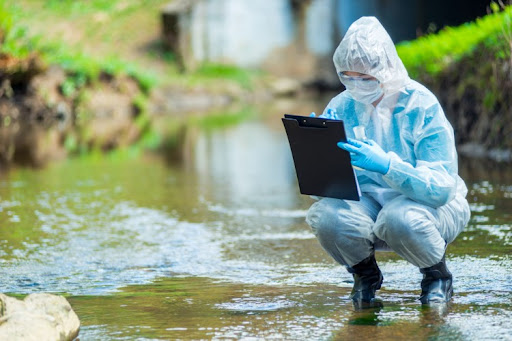Environmental scientists are unsung heroes. Combining their passion for both science and the environment, they work to protect precious ecosystems, bring environmental issues to the forefront and help ensure Earth’s sustainability. In public health, these professionals use their scientific expertise to identify and mitigate global environmental issues.
Health systems management is closely related to environmental science in that both involve risk assessment, planning and organizing systems, and an overall commitment to public health.
Many employers require environmental scientists to hold at least a bachelor’s degree for entry-level jobs but prefer candidates with a master’s degree for higher-level positions. The in-depth education afforded by earning a Master of Public Health has the potential to increase an environmental scientist’s salary and career opportunities.
How Much Does an Environmental Scientist Make?
As of May 2021, the median environmental scientist salary is $76,500 per year, according to the U.S. Bureau of Labor Statistics (BLS). Environmental scientists’ salaries can vary depending on their location, experience, industry and education.
The BLS reports that the top-paying industry for environmental scientists and specialists is the federal government, where they have a median annual salary of $103,500. Median salaries for environmental scientists working in some other industries are as follows: state government $67,700, local government $75,000, consulting services $75,800 and engineering services $77,500.
Employment of environmental scientists is projected to grow 5 percent from 2021 to 2031, according to the BLS. The reason for this estimated increase is the public’s growing interest in preventing and managing hazardous environments where they live and work. In addition, the number of businesses seeking the expertise of environmental scientists to plan and oversee environmental issues is expected to grow.
What Does an Environmental Scientist Do?
Environmental scientists study the environment and its impact on human life. Through the collection of water, soil, food and air samples, they can assess threats to the environment and create plans to restore polluted groundwater and soil. They often collaborate with businesses, schools and government agencies to develop specific environmental solutions to problems. These professionals may specialize in an area such as climate change, waste management or air quality.
The BLS reports that, as of 2021, the industry sector that employs the most environmental scientists and specialists is state government, followed by management, scientific and technical consulting services. Experience level requirements vary by employer, but most environmental scientists gain transferable skills through entry-level jobs as assistants and analysts.
Depending on their specific duties and their employer, environmental scientists often split their time between the field, the office and the laboratory.
Environmental Scientist Education and Skills
A bachelor’s degree is the minimum education an aspiring environmental scientist needs. Other than environmental science, relevant college majors include physics, biology and chemistry. Before climbing the career ladder, many environmental scientists start out as technicians, research assistants or field analysts.
Environmental scientists’ salary and promotion prospects can improve when they earn a master’s degree, which can help make them better candidates for advanced senior-level or research positions. In these advanced roles, environmental scientists may mentor junior staff, manage projects or become full-time researchers.
Another option to stay ahead in the field and stand out to employers is to earn relevant credentials, such as the certified hazardous materials manager credential available through the Institute of Hazardous Materials Management.
Aside from academic qualifications, environmental scientists need a range of skills to excel. To understand and develop effective solutions, they need to have strong problem-solving and analytical skills. They also should have solid written and verbal communication skills to be able to explain their research findings, present reports and collaborate with team members.
With the continuous advancements in technology, environmental scientists should also be proficient in tools such as geographic information systems (GISs).
Increase Your Environmental Scientist Salary Potential with a Master of Public Health
Earning a master’s degree in public health can provide professionals with the advanced public health knowledge they need to understand the connections between human health and the environment.
Augusta University Online’s nationally accredited Master of Public Health program offers prospective environmental scientists practical fieldwork experience and internships. The research-based graduate degree program also has a health management concentration option that can prepare students for leadership roles.
Learn more about AU Online’s Master of Public Health program and how it can equip you to improve human and environmental health and help our planet thrive.
Recommended Readings
MPH Requirements, Curriculum and Career Opportunities
3 Public Health Topics for Research
Solutions to How Farmers Markets Can Reduce Food Deserts
Sources:
Indeed, 20 Careers To Pursue With an Environmental Science Degree
Indeed, Environmental Scientist Job Description: Top Duties and Qualifications
LinkedIn, “15 Career Paths for an Environmental Science Degree”
U.S. Bureau of Labor Statistics, Environmental Scientists and Specialists
U.S. Department of Energy, Career Map: Environmental Scientist
U.S. Environmental Protection Agency, Environmental Topics
 Augusta University
Augusta University




